Does Sinn Féin rise bring Irish unity any closer?
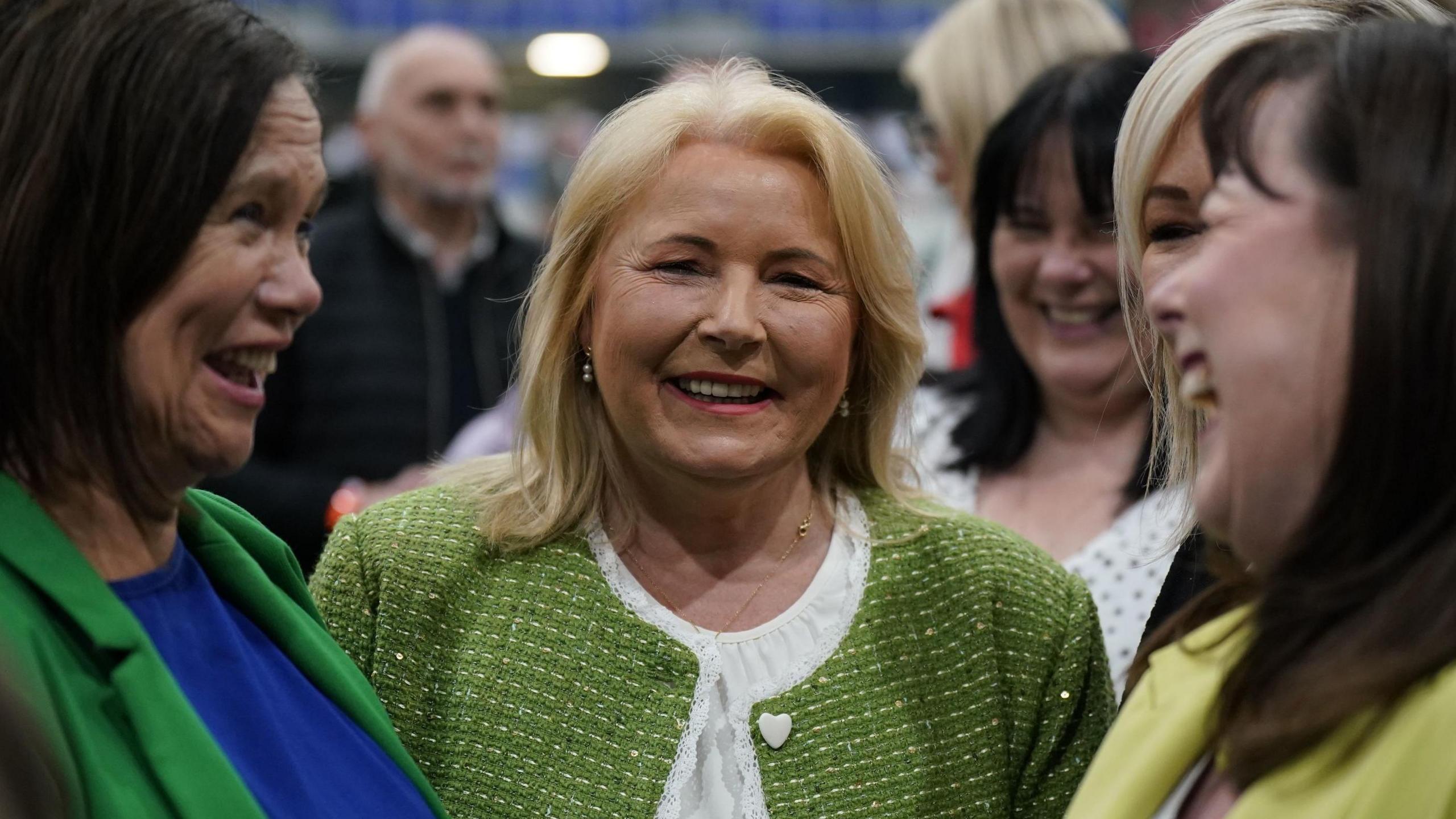
Sinn Féin's Pat Cullen celebrates with Mary Lou McDonald and Michelle Gildernew after her election as an MP
- Published
With a central statue dedicated to Queen Victoria in its grounds, Belfast City Hall holds many symbols of British and unionist culture.
But recently added to the front lawns are two statues honouring women revered within Irish republicanism.
For some, the inclusion of Mary Ann McCracken and Winifred Carney reflects a changing Northern Ireland.
And the UK general election results here may also mirror that change.
Sinn Féin is now Northern Ireland’s largest party at Westminster level - completing a historic hat-trick for Irish nationalism.
The party already became the largest in the devolved assembly at Stormont in 2022 and at local council level in 2023.
So how has Sinn Féin achieved this success? And what does it mean for the future of Northern Ireland?
'Unrelenting positivity'
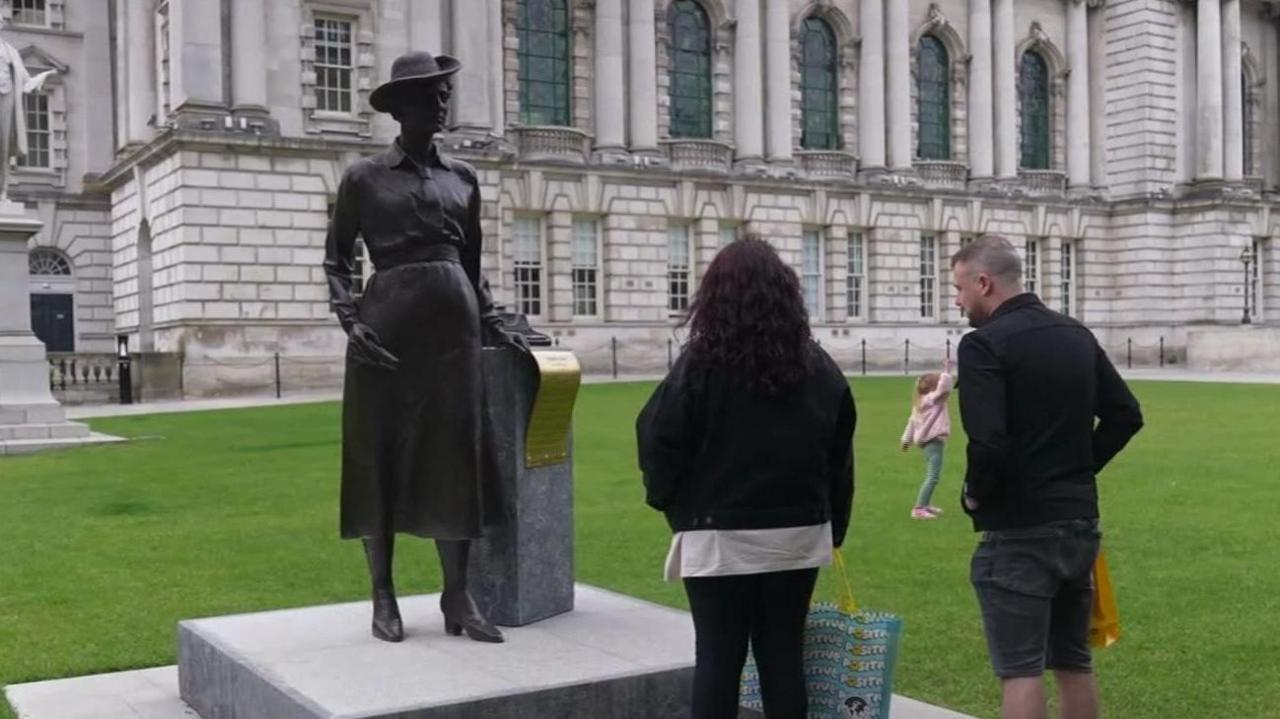
A statue of Winifred Carney in the grounds of Belfast City Hall
Nationalist political commentator Chris Donnelly, a former Sinn Féín election candidate, said the party has “undoubtedly benefited” from divisions within unionism.
For years the Democratic Unionist Party (DUP) has faced internal battles and pressure from smaller rivals over its handling of Brexit.
In this election the party fell to second place in Northern Ireland with five seats after losing three.
The DUP has been the "lead voice of unionism" for decades but has "corralled unionism into a cul de sac", Mr Donnelly said.
“So much so that in former unionist heartlands like North Down, East Belfast and Lagan Valley, these are now marginals with the Alliance Party - something that no one would have thought would have happened 25 years ago.”
In Thursday’s poll, DUP leader Gavin Robinson held on to his East Belfast seat, but the party did not stand in North Down and it lost the Lagan Valley seat it had held for the last 20 years to Alliance.
Sinn Féin has meanwhile been moving its politics "more into the centre and yielding the dividends”.
Mr Donnelly said the party is viewed as "more progressive, more forward-looking" with an election campaign of "unrelenting positivity".

Chris Donnelly said Sinn Féin's success helped make Irish unity a mainstream topic
'The peace dividend'
At the Ulster Museum in the south of the city, tourists visit an exhibition on the Troubles in Northern Ireland.
Its display cabinets contain many reminders of the decades-long violent conflict from all sides, including the role of the IRA.
In this election Sinn Féin continued to face questions over its past links to the republican paramilitary organisation.
Stormont’s First Minister Michelle O’Neill, deputy leader of Sinn Féin, was noncommittal when asked if she would attend IRA commemorations in future.
But Sinn Féin has changed significantly in the years since the 1998 Good Friday Agreement brought relative peace.
Marie Coleman, a professor of 20th century Irish history at Queen's University Belfast, said a younger generation is coming to the fore of the party.
"We see a generation of politicians born after the conflict, so with no involvement in the conflict," she said.
The academic added the "peace dividend is playing out in electoral politics".

QUB professor Marie Coleman said constitutional change requires a "pattern" of results over time
Abstentionism 'won't change'
Sinn Féin does not take its seats at Westminster due to the party’s policy of abstentionism.
Prof Coleman said there are no signs that stance will be reversed, and not only because of the oath of allegiance to the monarch that MPs must recite.
She said even if the UK "declared itself as a republic in the morning", the policy "wouldn't change".
"The bottom line is that Sinn Féin does not accept the right of the Westminster parliament to rule Northern Ireland," she said.
'Flip-flopping'
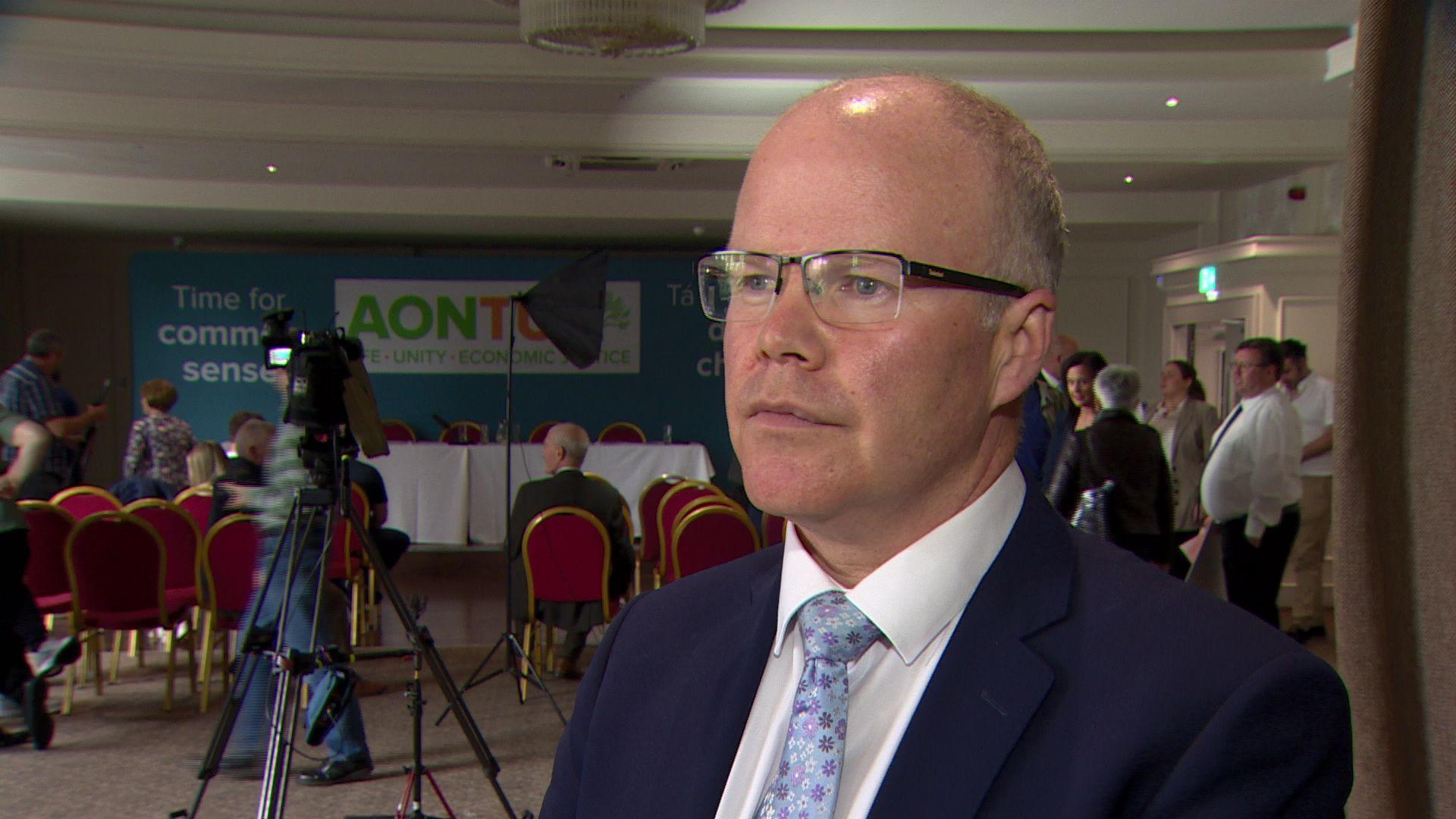
Aontú leader Peadar Tóibín quit Sinn Féin in 2018
While Sinn Féin's vote share increased compared to the last Westminster election in 2019, its share was down slightly on recent assembly and council elections.
It follows local and European elections in the Irish Republic last month in which the party did not make the major advances that many opinion polls had predicted.
Aontú leader Peadar Tóibín, a former Sinn Féin TD, said the party had "flip-flopped" on some policy areas including immigration.
“If you flip-flop too much, your credibility goes. If you have no credibility, then there's a difficulty for that party retaining support,” he said.
Mr Tóibín said that with Northern Ireland’s power-sharing government back in business since February, Sinn Féin could have difficulties.
"Sinn Féin have sold themselves as an anti-establishment party," he said.
"But in reality now that they have the position of First Minister, now that they are immersed in the administration of the north of Ireland, they can't ride those two horses at the same time."
He said that as Stormont "normalises" and "becomes more focused on the bread-and-butter issues, it's going to be very difficult for Sinn Féin to hold that level of support".
A united Ireland?
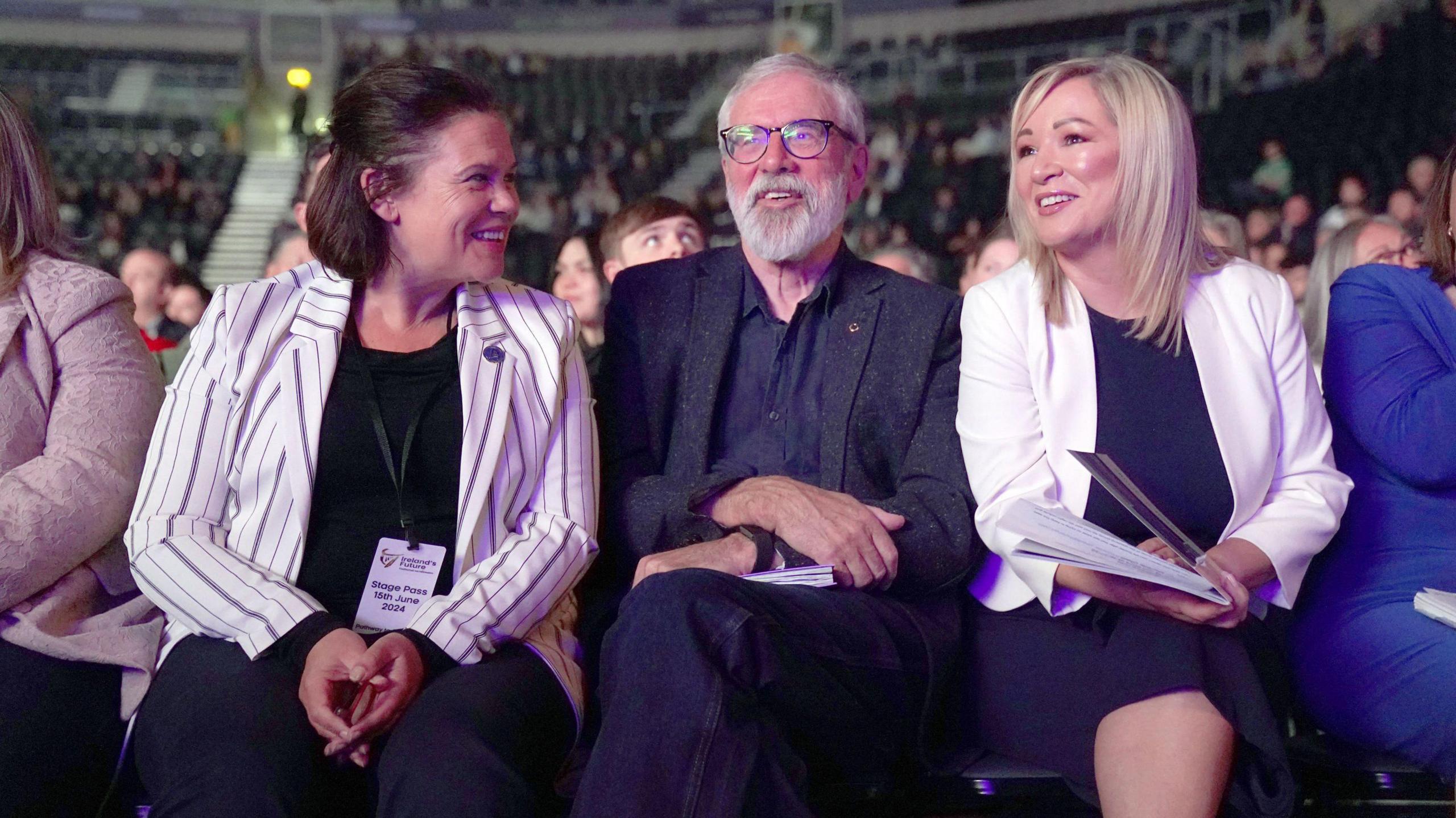
Sinn Féin leader Mary Lou McDonald with former leader Gerry Adams and the party's deputy leader Michelle O'Neill during an Ireland's Future event in Belfast
The electoral rise of Sinn Féin will inevitably lead to debate over any prospect of Irish unity - Northern Ireland leaving the UK to join with the Republic of Ireland.
During the election campaign, senior party figures attended a major rally in Belfast organised by a group lobbying for a united Ireland.
Mr Donnelly argued Sinn Féin’s growth has forced other parties in the Republic to “become more serious” about the idea.
“And therefore the whole conversation around Irish unity has become much more mainstream than it ever was,” he said.
But loyalist commentator Emma Shaw said Sinn Féin's constitutional ambitions should "go on a back burner for a while" if the party wants to reach into unionist communities.
"Nobody within my community is interested in having a united Ireland, or in a lot of cases having those conversations," she said.
"Do we have to share this island? Yes, 100%. We can have those conversations about how Northern Ireland can work.
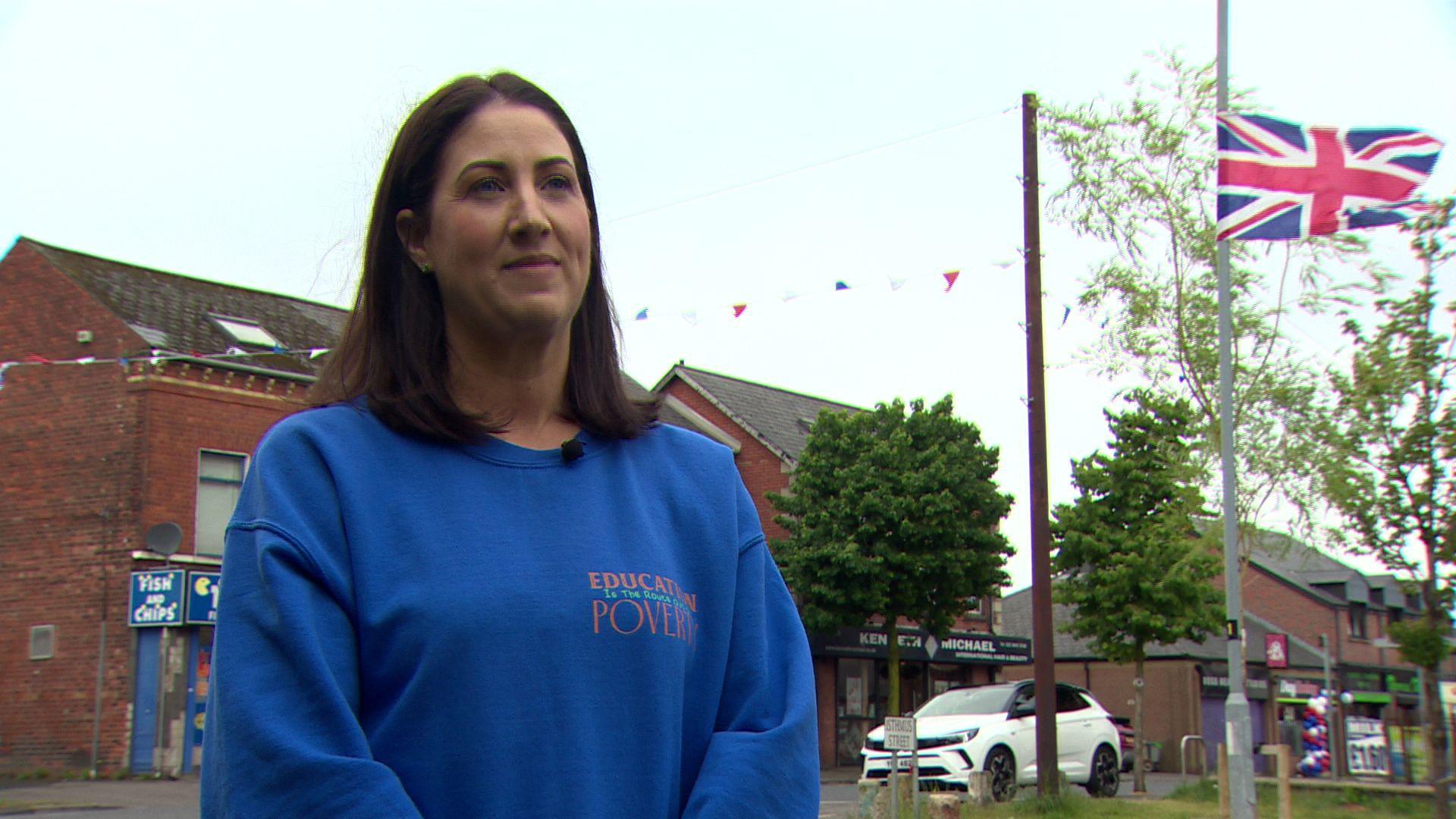
Emma Shaw said loyalists were uninterested in talking about a united Ireland
Ms Shaw said that while some may be uncomfortable with Sinn Féin's rise, she did not feel concerned.
"I'm not threatened by Sinn Féin or a Sinn Féin first minister," she said.
"I want to see all the parties work together to make Northern Ireland succeed and make Northern Ireland be a better place to live."
Prof Coleman said the combined vote share for Sinn Féin and the other main nationalist group, the Social Democratic and Labour Party (SDLP), has remained “more or less steady” at about 40% since the Good Friday Agreement.
"Some of Sinn Fein's success would appear to come from nationalist voters veering more towards Sinn Féin and away from the SDLP,” she said.
She said that a Northern Ireland secretary - whose decision it would be to call any referendum - would likely seek consistent evidence of majority support for Irish unity.
"You'd need more than just the result of one general election - you'd need a pattern of elections," she said.
"You'd need more just than just having the most seats - you'd need a majority of seats.
"But you would also need to look at the vote share for the two main nationalist parties which want a united Ireland.
"So it's very hard to see yet that the circumstances which would lead a secretary of state call a border poll are there.”
Overall vote share
The timing of any future referendum on Irish unity is still at the “discretion” of the secretary of state, according to Jon Tonge, professor of politics at the University of Liverpool.
“If it’s on seats, palpably Sinn Féin have got a case for a border poll," he told the BBC's Nolan Show.
But he also pointed out that the unionist vote has been “ridiculously” divided in Parliament and nationalists do not have a majority when it comes to the share of the overall vote.
If you take the combined vote shares of Sinn Féin (27%), the SDLP (11%), Aontú (1%) and People before Profit (1%), the total amounts to about 40%.
But if you combine the votes of the DUP, UUP, TUV and the new Independent MP Alex Easton, unionists have a larger share of about 43%.
And, of course, there is still the mystery factor of those who do not yet take a position on the constitutional question.
As Prof Tonge said: “With Alliance on 15% yesterday, we don’t know, frankly, with great conviction what way their voters would go, so the debate will rumble on.”